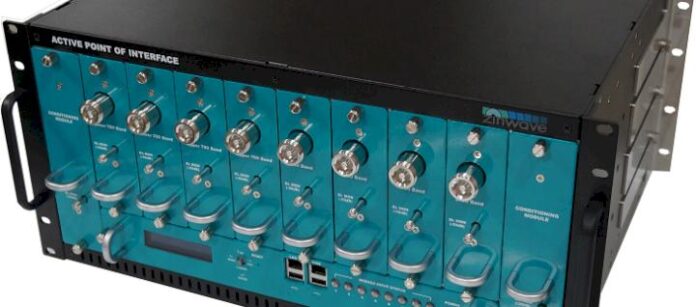Value-added resellers help DAS vendors target enterprise customers
How real is the market for enterprise DAS? The companies that make and market distributed antenna systems know they need to convince enterprises to finance their own in-building systems instead of waiting for the wireless carriers to pay. But success has come slowly, and even the successful vendors are still learning.
“We’ve done a pretty good job at acquiring some really high-value enterprise customers but … by no means have we got it fully figured out,” said Scott Willis, who recently left Goodman Networks to become CEO of Zinwave, which makes a modular, multi-band DAS system targeted at enterprise buyers. Willis said Zinwave sells directly to enterprise customers when it can, but the company also relies heavily on value-added resellers.
“That VAR channel and those alternative channels to the market are a critical part of the sales strategy,” said Willis. “We can build those relationships and bring our solution into [the value-added reseller’s] end-to-end proposal that would go in front of an enterprise customer, so that’s a critical channel for us. … When you think about the enterprise space and that many more touch points into the market, it’s difficult to go out and hire all the sales people that it takes.”
Value-added resellers, or VARs, add value to a networking solution through service, software, or by combining several technologies from different vendors to create a total solution that is greater than the sum of its parts.
“The partnership between OEMs and VARs is one of the necessary steps to reach out to the wider enterprise community,” said Arnold Kim, COO at DAS vendor ADRF. Kim said that value-added resellers can be as important as equipment manufacturers in creating turnkey DAS solutions for enterprise customers. “ADRF has always made it one of our highest priorities to continuously train and certify our VAR partners to meet the stringent requirements of the wireless service providers,” he said.
Helping VARs understand DAS
DAS vendors agree on the importance of training VARs to help them better understand in-building cellular and how it can complement other solutions. In addition to the carriers’ requirements, VARs must often integrate new ownership or funding models for DAS.
“It can add a level of complexity for the VAR,” said Scott Gregory, director of marketing at SOLiD Technologies. “What we’re looking at is creating a program by which we would help support VARs heavily in the pre-sales effort. … They are going to need help, but they do actually hold the key to a lot of opportunity.”
SOLiD calls its target enterprise customer a “middleprise,” which it defines as a commercial venue of 100,000 – 500,000 square feet. Gregory said the value-added resellers will be key partners in addressing this market.
“They own a lot of the existing relationships within that target market,” he said. He said that for now, SOLiD relies mostly on the larger, nationwide VARs. “The higher you go up, the more scalable the engagement is,” he explained. But he expects to work with smaller VARs as the enterprise market matures and as distributed antenna systems become simpler to deploy.
“Fast forward three years from now … when we start talking about enterprise-grade solutions, where an IT group could possibly do a lot of the set-up and work on the solution, then the smaller VARs probably have a bigger play,” he said.
As DAS solutions become easier to deploy, VARs are more likely to integrate them. Zinwave’s Scott Willis sees simplicity as a key selling point. “It’s literally four boxes in our solution that can cover any spectrum band top to bottom,” he said. “It’s really a simplified solution that we’re going to be able to deploy out into the enterprise market segment.”
Willis said he wants to partner with two VARs in each of the geographic areas that he sees as major markets for Zinwave’s key verticals: airports, hospitals, higher education/college stadiums, public safety, and companies that are expanding and want wireless-only telecom for their new campuses. He said that certain verticals show geographic concentrations; for example, South Florida has a large number of hospitals and Silicon Valley has a concentration of companies that are interested in wireless campuses.
Follow me on Twitter.
Image source: Zinwave

